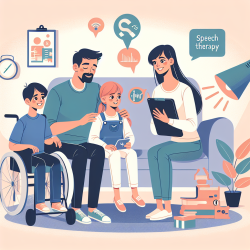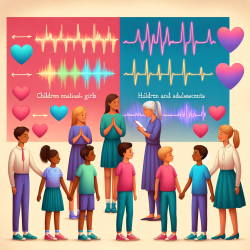Introduction
Physical activity (PA) is a cornerstone of health, particularly for children with intellectual disabilities (ID). The study "Moderate-to-vigorous intensity physical activity levels of children with intellectual disability during physical education classes" by Hao and Razman (2023) highlights the need for enhanced physical education (PE) programs to meet the recommended PA levels for children with ID.
Research Insights
The study utilized accelerometers to objectively measure PA levels of 53 children with severe ID during PE classes in China. Results showed that only 22.88% of PE class time was spent in moderate-to-vigorous physical activity (MVPA), significantly below the 50% recommended by health authorities. Boys participated more in MVPA than girls, and younger grades were more active than older ones.
Implications for Practitioners
Practitioners can draw several actionable insights from this research:
- Curriculum Reevaluation: Adapt PE curricula to include more engaging and varied activities that promote MVPA, considering gender and grade differences.
- Teacher Training: Equip educators with strategies to motivate children with ID, such as using positive reinforcement and creating inclusive environments.
- Individualized Approaches: Tailor activities to meet the unique needs and interests of children with ID, promoting both structured and unstructured activities.
Encouraging Further Research
This study underscores the importance of continued research to explore effective strategies for increasing PA among children with ID. Future studies should focus on diverse populations and settings to develop comprehensive, evidence-based interventions.
To read the original research paper, please follow this link: Moderate-to-vigorous intensity physical activity levels of children with intellectual disability during physical education classes.










